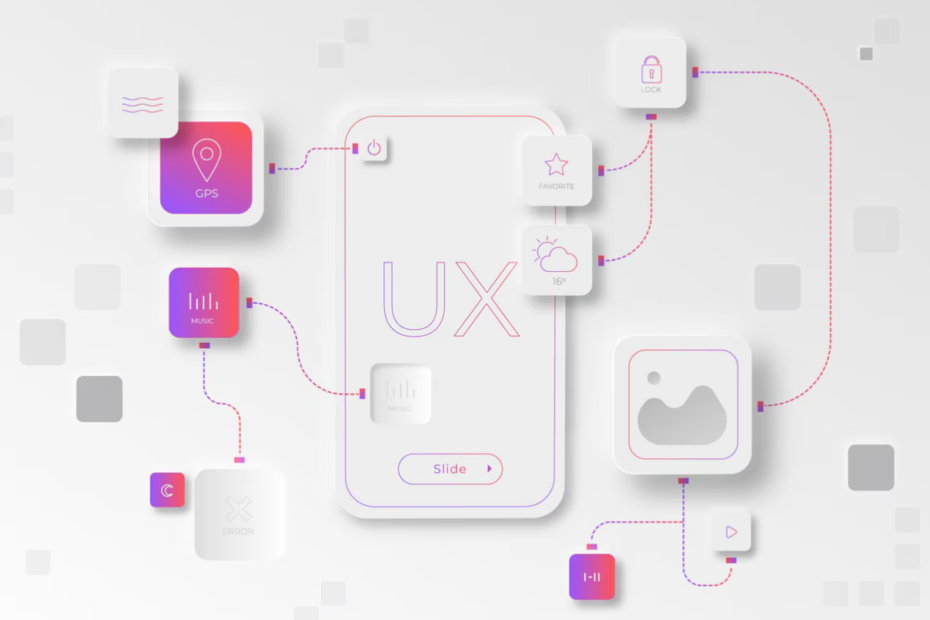In the fast-paced world of product development, speed and cost-efficiency often take center stage. Startups rush to build MVPs, enterprises aim to outpace competitors, and everyone wants to go to market fast. But in this race, one crucial role is often overlooked the UX Designer. Bringing a UX designer on board early isn’t just a “nice to have” it can save your product from usability pitfalls, customer churn, and costly rework down the line.
In this article, we’ll explore why early UX design involvement is essential, what risks it helps mitigate, and how it contributes to long-term product success.
1. First Impressions Are Everything
Users form opinions about your product within seconds. A confusing layout, unclear navigation, or inconsistent visuals can immediately drive them away. Hiring a UX designer early helps create a strong first impression by ensuring the user interface is not only attractive but also intuitive and logical.
Early UX work helps define:
Information architecture
Navigation patterns
User flows
These foundational elements influence how users experience your product from the moment they land on the first screen.
2. Saves Time and Money on Rework
One of the most common and costly mistakes in product development is building features that confuse or frustrate users. Fixing usability issues after development can be up to 100 times more expensive than addressing them during the design phase, according to IBM’s research.
An early-stage UX designer can:
Identify user pain points before coding starts
Run usability tests on prototypes
Help prioritize features based on real user needs
This prevents your development team from wasting time building things users don’t actually want.
3. Aligns Product Vision with User Needs
Many products fail not because of technical flaws, but because they don’t solve a real user problem or they solve it in a way that’s difficult to use.
By including a UX designer early, you’re able to:
Conduct user research (interviews, surveys, observations)
Understand user goals and pain points
Develop personas and empathy maps
These insights ensure your product vision is grounded in user reality, not assumptions.
4. Shapes a Better MVP
The MVP (Minimum Viable Product) is often misinterpreted as “barebones” or “quick and dirty.” But an MVP should still deliver a great user experience — otherwise, you risk a poor first impression and low adoption.
A UX designer ensures your MVP:
Focuses on the right core features
Offers a usable and valuable experience from day one
Provides a learning loop based on actual user behavior
This sets the foundation for iterative improvements based on validated feedback.
5. Supports Cross-Functional Collaboration
UX designers don’t just create screens they act as a bridge between product managers, developers, marketers, and stakeholders. When brought in early, they help facilitate clearer communication, aligned goals, and shared understanding.
They often contribute to:
Writing user stories and acceptance criteria
Communicating design rationale in sprint planning
Collaborating with developers to ensure design fidelity
This reduces friction across teams and ensures a more cohesive product.
6. Increases Customer Satisfaction and Retention
A product that’s easy to use, enjoyable to interact with, and solves real problems is one users return to. In crowded markets, UX can be your competitive advantage.
Early UX investment leads to:
Lower bounce rates
Higher customer satisfaction scores
Increased user engagement and loyalty
Positive word-of-mouth and reviews
Put simply: Happy users become loyal customers and loyal customers drive growth.
7. Lays the Groundwork for Scalability
Products evolve. New features are added. Interfaces expand. If UX wasn’t considered early on, adding new functionality can lead to a cluttered, confusing experience. But when you have a solid UX foundation, your product can scale gracefully.
Early UX work provides:
Consistent design systems
Scalable UI patterns
Design documentation for future enhancements
This prepares your product for long-term success, not just early traction.
Final Thoughts
Bringing in a UX designer early is not a luxury — it’s a strategic move that protects your product from failure. It reduces waste, aligns your team with user needs, and ensures you launch something people actually enjoy using. In today’s user-driven digital landscape, investing in UX from the start isn’t just smart it’s essential.
Whether you’re building an MVP, launching a new feature, or overhauling an existing product, early UX design can be the difference between success and struggle.
